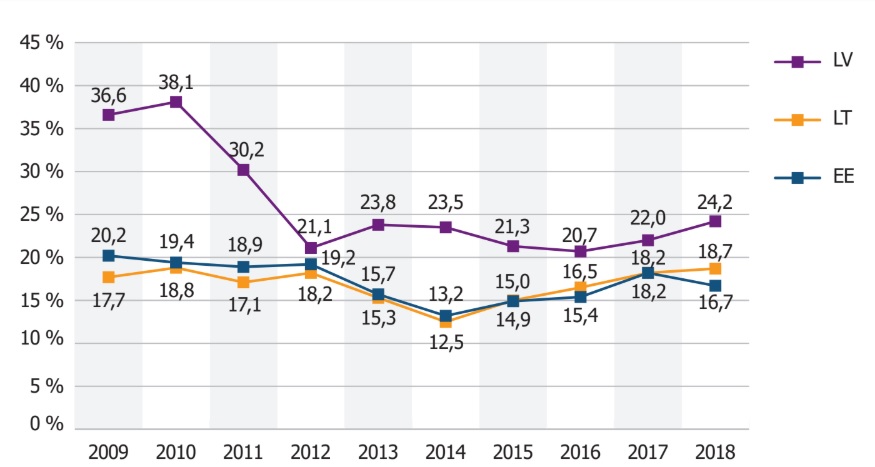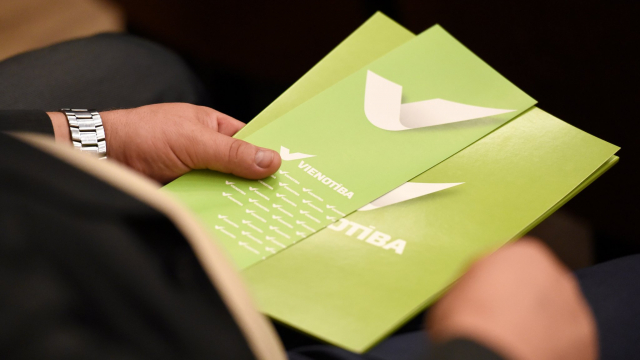The figure emerged from the annual presentation of the "Shadow Economy in Latvia" report at the Stockholm School of Economics in Rīga. The report, by academics Arnis Sauka and Tālis Putniņš, has become an important barometer of the unofficial or gray economy which avoids paying taxes and other social payments.
According to the data, the shadow economy accounted for 24.2% of total GDP in 2018, a figure 2.2 percent larger than 2017's figure and a worrying rise. After several years in which the shadow economy had been shrinking following the economic crisis, the survey suggests it has grown for the last three years.
In contrast, the size of the shadow economy in Lithuania has increased by 0.5% to 18.7% of GDP, while in Estonia the size of the shadow economy decreased by 1.5% to 16.7% of GDP.
In all three Baltic states, the main manifestation of the shadow economy was the payment of wages by means of so-called "envelope" or cash-in-hand payments. In Lithuania and Latvia, bribery levels were also found to have increased.
Rīga and Zemgale region were identified as the places with the highest level of shadow economy participation.
Commenting on the research, Sauka said not all of the news was negative.
“Latvia's economic situation has been improving in recent years and tax revenues are also increasing. For example, the data collected by the State Revenue Service show that revenues from the state
compulsory social security contributions in 2018 were 14.7% higher than in 2017, but VAT revenue was 12.3% more than the previous year."
"However, despite these impressive figures... the shadow economy continues to grow and it is by no means a good trend.”
In theory, as the economy grows and tax revenue increases, the shadow economy should shrink, but in practice this is not always the case, the authors pointed out.
“For example, as the economy grows, it may not improve the overall business environment and business satisfaction with how tax money is used... as we stressed last year too, these problems undoubtedly exist in Latvia and point to challenges in the field of effective control mechanisms,” said Sauka.
However, in the wider context things are slightly more optimistic. When the survey started in 2009, it estimated that 36.6% of the Latvian economy was in the shadows. This rose even further to 38.1% in 2010, but despite several blips along the way, the general trend has been a decline, with the low water mark so far 2016's figure of 20.7%.
On the other hand, Latvia's gray economy has remained consistently larger than those of its neighbors to the north and south.
The research is produced by the Stockholm School of Economics in Riga (SSE Riga) and the Latvian Chamber of Commerce and Industry (LCCI) in cooperation with the Ministry of Finance and BASE (Business Against the Shadow Economy).





























